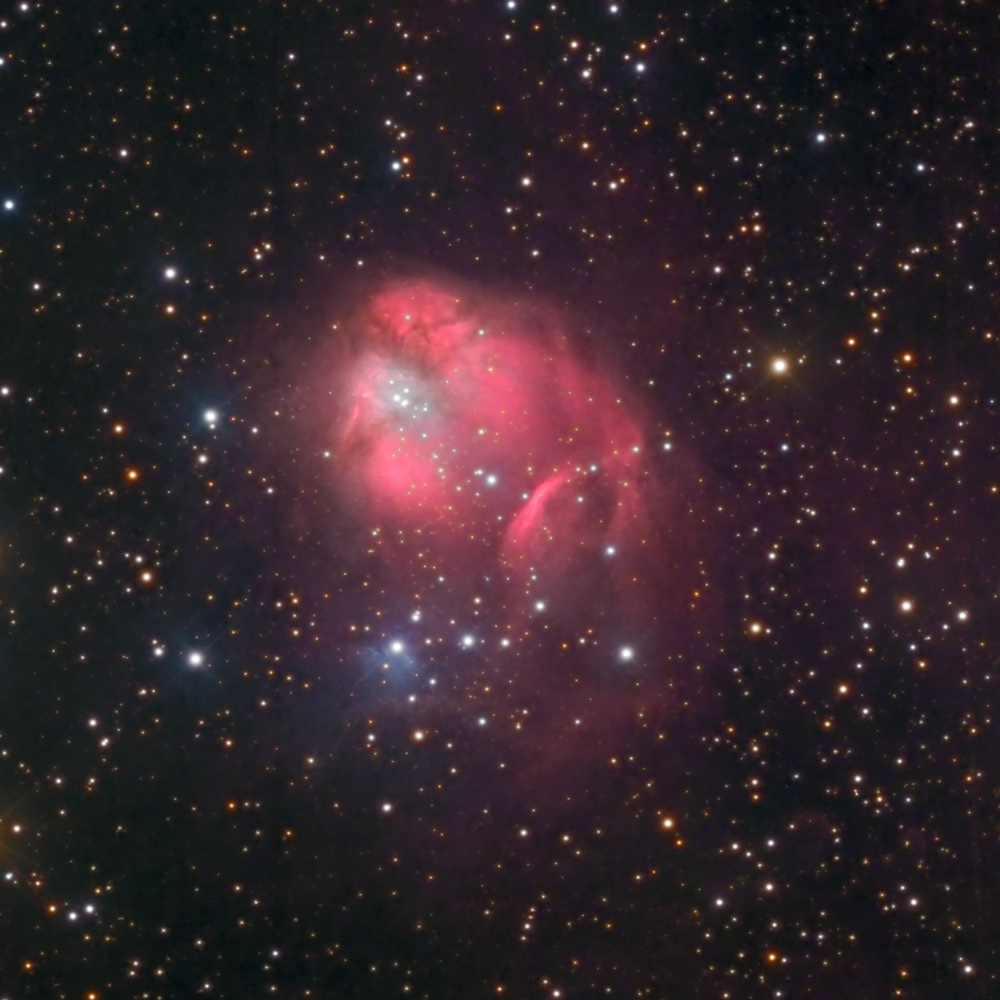Technical Information:
Ha:L:R:G:B: 630:780:255:180:180 (a total of almost 34 hours of light-frame exposure time); luminance, red and green exposures were all 15-minute exposures;
blue all 20-minute exposures; Ha were all 30-minute exposures. I took lots of OIII data, but it would not have added anything, so I didn't use it. The luminance layer consisted of a blend of:
(i) 36 fifteen-minute images through the luminance filter, (ii) 48 five-minute images through the luminance filter, and (iii) 21 thirty-minute images through the Ha filter. The red channel is a blend of the
red-filtered data and the Ha-filtered data.
Equipment: RC Optical Systems 14.5 inch Ritchey-Chretien carbon fiber truss telescope, with ion-milled optics and RCOS field flattener, at about f/9, and an SBIG STX-16803 camera with
internal filter wheel (SBIG filter set), guided by an SBIG AO-X, all riding on a Bisque Paramount ME German Equatorial Mount.
Image Acquisition/Camera Control: Maxim DL, controlled with ACP Expert/Scheduler, working in concert with TheSky X.
Processing: All images calibrated (darks, bias and sky flats), aligned, combined and cropped in Pixinsight. Color combine in Pixinsight. Some finish work (background neutralization,
color calibration, NB blend, deconvolution, multiscale linear transform, HDR multiscale transform, and noise reduction) done in Pixinsight; some cleanup finish work was done in Photoshop CC.
Location: Data acquired remotely from Sierra Remote Observatories, Auberry, California, USA.
Date: Images taken on many nights in February, March and April of 2022. Image posted June 2, 2022.
Date: Image scale of full-resolution image: 0.56 arcseconds per pixel.
Seeing: Generally good; luminance images varied in FWHM from 1.7 to 2.8 arcseconds; luminance master was deconvolved to 1.5 arcsecond FWHM.
CCD Chip temperature: -25C
